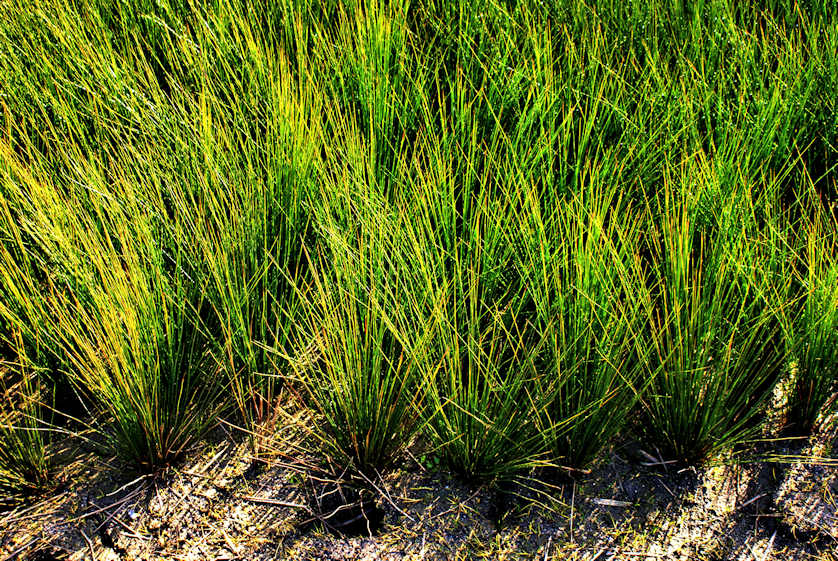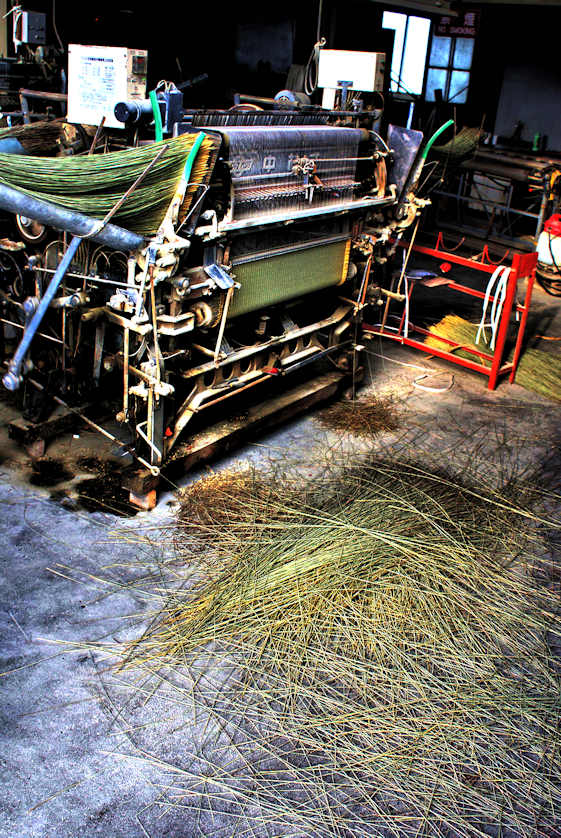Yatsushiro and Tatami 畳
Jake Davies
 |
| The skyline of Yatsushiro, Kumamoto, an unlikely setting for one of Japan's unique cultural products |
Yatsushiro is a small city on the coast of Kumamoto Prefecture in central Kyushu. Located at the mouth of the Kumagawa River where it empties into the sea across from the Amakusa Islands, it is not a well-known tourist destination and for most is just glimpsed out of the Shinkansen window.
Once home to a small castle, the town's major landmarks now are the chimneys and industrial structures of a large paper mill. North of the town is a flat, coastal plain covered in fields and paddies dotted with small farming settlements, and it is from here that Yatsushiro produces what is arguably its most important crop, igusa, the type of rush that is used in tatami mats, and of which Yatsushiro produces a full 90% of all that is now produced in Japan.
 |
| Tatami mats, the traditional Japanese flooring that was originally only for the elite and wealthy |
Uniquely Japanese
Tatami are the rectangular mats that cover floors in traditional Japanese homes and spaces. They are a uniquely Japanese product, unlike so many that actually have their origins in China or Korea. If Japan had imported the chair from China then maybe tatami would not have even been invented.
In the Heian Period (794-1185) most Japanese homes had dirt floors with straw mats. The wealthy, however, had wooden floors, and tatami was used for seating. By the Muromachi Period (1336-1573), the use of tatami had become more widespread and by now whole rooms would be covered in tatami. By the late 17th century the use of tatami had spread to many commoners' houses.
 |
| Small, local tatami workshops still can be found in many towns |
Tatami Parts
There are three parts to a tatami mat: tatami-doko, tatami-fuchi, and tatami-omote. Tatami-doko is the bulk of the mat, the interior. Traditionally it was compressed rice straw, but nowadays foam, wood-chips, and other materials are often used, sometimes in combination with straw. Tatami-fuchi is the woven brocade strips that cover the edges of the mat. These are woven in a variety of standard designs. Tatami-omote, is the surface of the mat, the woven strands of igusa, and it's from the Yatsushiro area that most of the Japanese igusa now come from.
 |
| Flooded paddy in December being prepared for igusa planting |
Igusa
Igusa (pronounced igsa, the u is very weak), Juncus effusus, is known as soft rush or common rush in English. It grows naturally throughout the Japanese islands, and is actually found growing over most of the world. Its natural habitat is near water, on river banks, marshy land, etc. As the use of tatami mats spread, the Japanese began to cultivate it, and about 500 years ago the daimyo of Kumamoto gave a license to produce igusa to 5 villages in the Yatsushiro area. In the Meiji period restrictions on who could grow igusa were lifted, but whereas nowadays there is little igusa grown in most of Japan, igusa production flourishes in the Yatsushiro area.
 |
| Young igusa shoots growing in paddies near Yatsushiro, Kumamoto. Virtually indistinguishable from a rice paddy |
Paddies
Igusa is grown in flooded paddies, in a similar way to rice, though the seasons are almost opposite. Igusa is panted in late Autumn to early Winter, after the rice has been harvested. The small machines used in the planting and harvesting of igusa are variations on the same machines used for rice. In the Spring a net is stretched over the paddy so that as the plant grows tall the net supports it and stops wind damage. The igusa is harvested in the peak of Summer when it has grown to up to a meter and a half tall.
 |
| The growing igusa plants will soon need a supportive net |
Processing
After harvesting, the same farming families that grew the igusa also do the processing. First the igusa is dried and then stored in dark conditions. This enables the retention of the light-green color typical of a new tatami mat. Though igusa is only harvested once a year, the weaving of the mats goes on pretty much all year round. Every small village will have several workshops where the "chaka-chaka-chaka" of machinery can be heard. The igusa straw is first graded, then trimmed, and finally woven into mats ready for tatami-makers throughout the country.
 |
| Dried igusa is trimmed and cut to length |
 |
| The first mechanical looms for weaving igusa into tatami were invented in the 1930s |
 |
| The final product waiting to be shipped to a tatami maker |
Purchase Tatami from Japan
Purchase a selection of tatami products from GoodsFromJapan
Related
Daruma Dolls - History & Symbolism
Shichimi Togarashi Seven Spices
© GoodsFromJapan.com

No comments:
Post a Comment